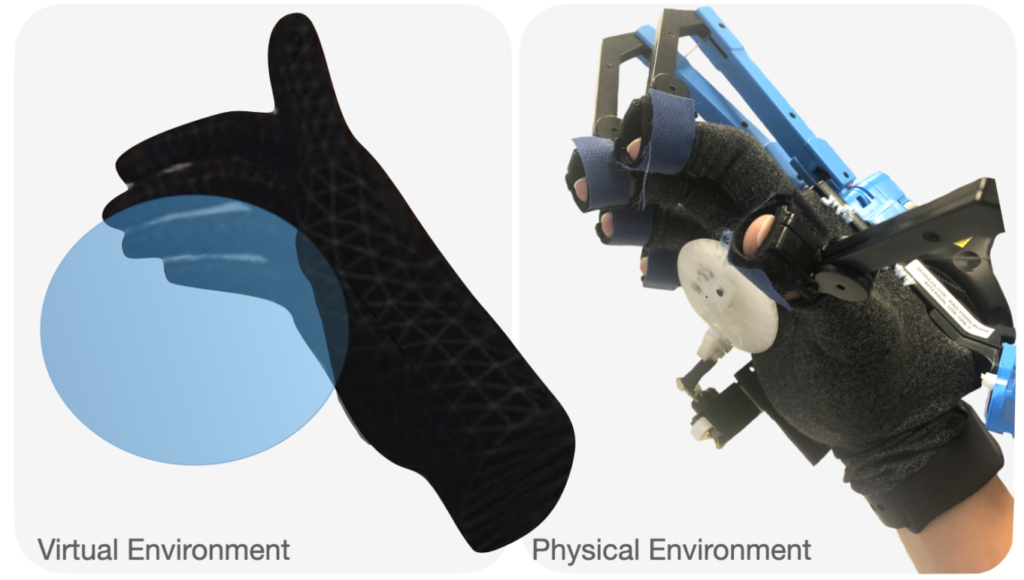2022年
-

When Tangibles become Deformable
Studying Pseudo-Stiffness Perceptual Thresholds in a VR Grasping Task Pseudo-Haptic techniques, or visuo-haptic illusions, leverage user’s visual dominance over haptics to alter the users’ perception. As they create a discrepancy between virtual and physical interactions, these illusions are limited to a perceptual threshold. Many haptic properties have been studied using pseudo-haptic techniques, such as weight, shape or size. In this paper, we focus on estimating the perceptual thresholds for pseudo-stiffness in a virtual reality grasping task. We conducted a user…
-

PalmEx: Adding Palmar Force-Feedback for 3D Manipulation with Haptic Exoskeleton Gloves
Haptic exoskeleton gloves are a widespread solution for providing force-feedback in Virtual Reality (VR), especially for 3D object manipulations. However, they are still lacking an important feature regarding in-hand haptic sensations: the palmar contact. In this paper, we present PalmEx, a novel approach which incorporates palmar force-feedback into exoskeleton gloves to improve the overall grasping sensations and manual haptic interactions in VR. PalmEx’s concept is demonstrated through a self-contained hardware system augmenting a hand exoskeleton with an encountered palmar contact…
-

Survey of Wearable Haptic Technologies for Navigation Guidance
Wearable haptic technologies, known as wearable haptics, instantiate physical contacts with users, either to confirm actions or to communicate a surrounding information – over a worn-type interface. Two factors require to be addressed for their design: the body locus – a function of comfort and sensitivity, and the types of stimuli they provide.Wearable haptics have gained great popularity in the last decade, thanks to their effectiveness, ease of use, and variety of application scenarios.This paper provides a non-exhaustive review of…
-

Within-Object Intention Prediction Model
We present a novel computational model to favour bare-hands interactions with haptic technologies in Virtual Realityenvironments. Using grasp taxonomies defined in the literature, we broke down users’ gestures into four key geometrical features and developed a model which dynamically predicts the users future within-object grasp intentions locations. The model supports a wide range of grasps including precision and power grasps, pulling or pushing as well as two-handed interactions. Moreover, its implementation does not require calibration (no parameter, user-independent) nor specific…
-

“Let’s Meet and Work it Out!”
Understanding and Mitigating Encountered-Type of Haptic Devices Failure Modes in VR Encountered-type of Haptic devices (ETHD) are robotic interfaces physically overlaying virtual counterparts prior to a user interaction in Virtual Reality. They theoretically reliably provide haptics in Virtual environments, yet they raise several intrinsic design challenges to properly display rich haptic feedback and interactions in VR applications. In this paper, we use a Failure Mode and Effects Analysis (FMEA) approach to identify, organise and analyse the failure modes and their…




